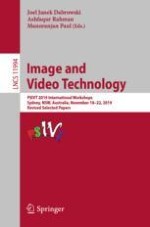This book constitutes the thoroughly refereed post-conference proceedings of four international workshops held in the framework of the 9th Pacific-Rim Symposium on Image and Video Technology, PSIVT 2019, in Sydney, NSW, Australia, in November 2019: Vision-Tech: Workshop on Challenges, Technology, and Solutions in the Areas of Computer Vision; Workshop on Passive and Active Electro‐Optical Sensors for Aerial and Space Imaging; Workshop on Deep Learning and Image Processing Techniques for Medical Images; and Workshop on Deep Learning for Video and Image Analysis.
The 16 revised full papers presented were carefully selected from 26 submissions. The papers cover the full range of state-of-the-art research in image and video technology with topics ranging from well-established areas to novel current trends.
